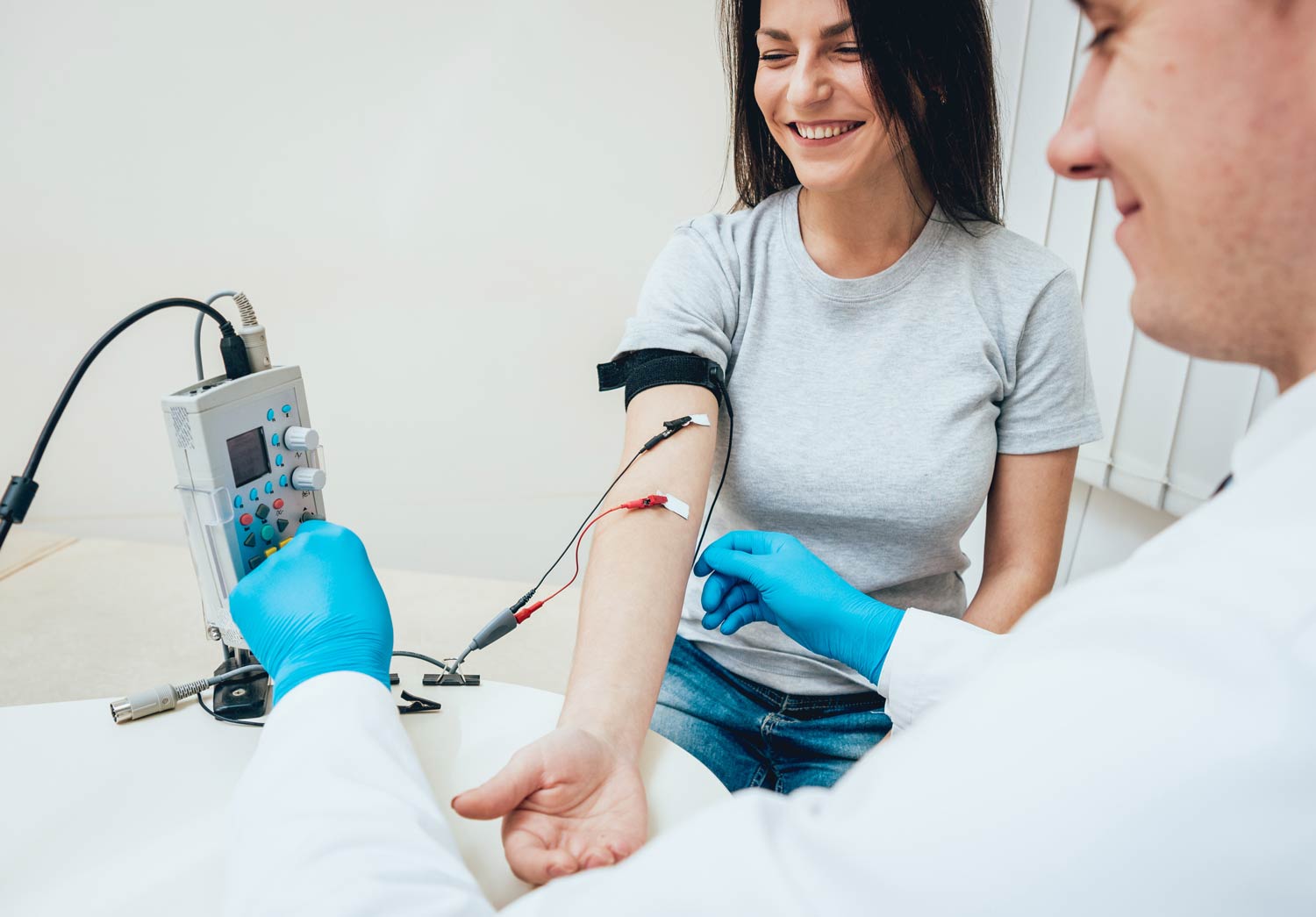EMG Testing
Electromyography (EMG) is a diagnostic procedure to evaluate the health of muscles and nerve cells. An EMG test measures the electrical activity of muscles at rest and during contraction. The test is used to diagnose conditions such as carpal tunnel syndrome, peripheral neuropathy, muscular dystrophy, or other nerve and muscle disorders.

Why is an EMG Test Performed?
An EMG test is often recommended to identify the cause of symptoms like numbness, tingling, muscle weakness, or pain. It is also used to diagnose nerve or muscle disorders, assess the severity of nerve damage, and monitor the progression of certain neurological conditions. At Newman Regional Health, our experienced neurologists and technicians use EMG to provide accurate diagnoses and guide personalized treatment plans.
How is an EMG Test Performed?
An EMG test typically consists of two parts:
First, a nerve conduction study (NCS) is done to measure how well and how fast electrical signals travel through your nerves. Small electrodes (stickers) are placed on the skin over the nerve being tested. A mild electrical impulse is applied to stimulate the nerve, which may feel like a brief tingling or shock. The response of the nerve is recorded to assess its function. This part usually takes 15–30 minutes, depending on the number of nerves tested.
Second, a needle EMG test is done to evaluate the electrical activity of muscles and the nerves controlling them. A small, thin needle electrode is inserted into specific muscles. The needle is about the size of an acupuncture needle. The technician or doctor may ask you to relax or contract the muscle (e.g., by slightly moving your arm or leg). The needle records the muscle’s electrical activity, which is displayed on a monitor and analyzed. This part typically takes 20–40 minutes, depending on the number of muscles tested.
The entire EMG test usually lasts 30–60 minutes, depending on the complexity of the case.
What to Expect During the EMG Test
Before the test, inform your doctor about any medications, especially blood thinners, or if you have a pacemaker or implanted defibrillator. Avoid applying lotions or oils to your skin on the day of the test, as they can interfere with electrode placement. Wear loose, comfortable clothing, or you may be asked to change into a gown. Arrive on time for your appointment. No fasting or sedation is typically required.
The test is performed in a comfortable, private exam room by a trained neurologist or technician. During the nerve conduction study, you may feel mild tingling or a brief, mild shock during stimulation, similar to static electricity. This is generally well-tolerated. During the needle EMG, you may feel a brief discomfort or a pinching sensation as the needle is inserted. Most patients describe it as mildly uncomfortable rather than painful.
The technician or doctor will guide you through each step and may ask you to move or relax certain muscles during the test.
After the Test
You can resume normal activities immediately after the test. There’s no downtime required. Mild soreness or bruising at the needle sites is possible but rare and typically resolves quickly. Your doctor will analyze the EMG results and discuss them with you, usually within a few days. The results will help determine the cause of your symptoms and guide treatment.
Frequently Asked Questions
- Is the EMG test painful? The test may cause mild discomfort, but it’s generally well-tolerated. Our team takes steps to minimize any discomfort.
- How long does it take to get results? Results are typically available within a few days, and your doctor will review them with you.
- Do I need to prepare anything special? Avoid lotions or oils, and inform your doctor about medications or medical devices.
Meet the Doctor
How to get started with EMG Testing
Start your journey to better health by talking with your primary care doctor, who can provide a referral. Don’t have a primary provider yet? Choose one today and begin personalized care.

